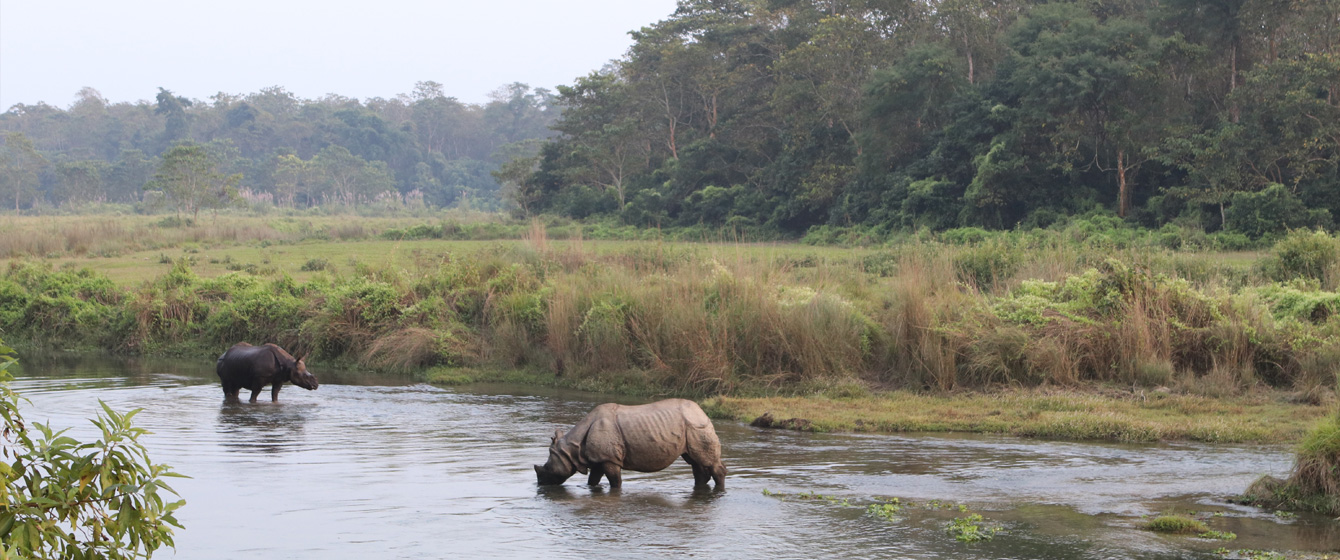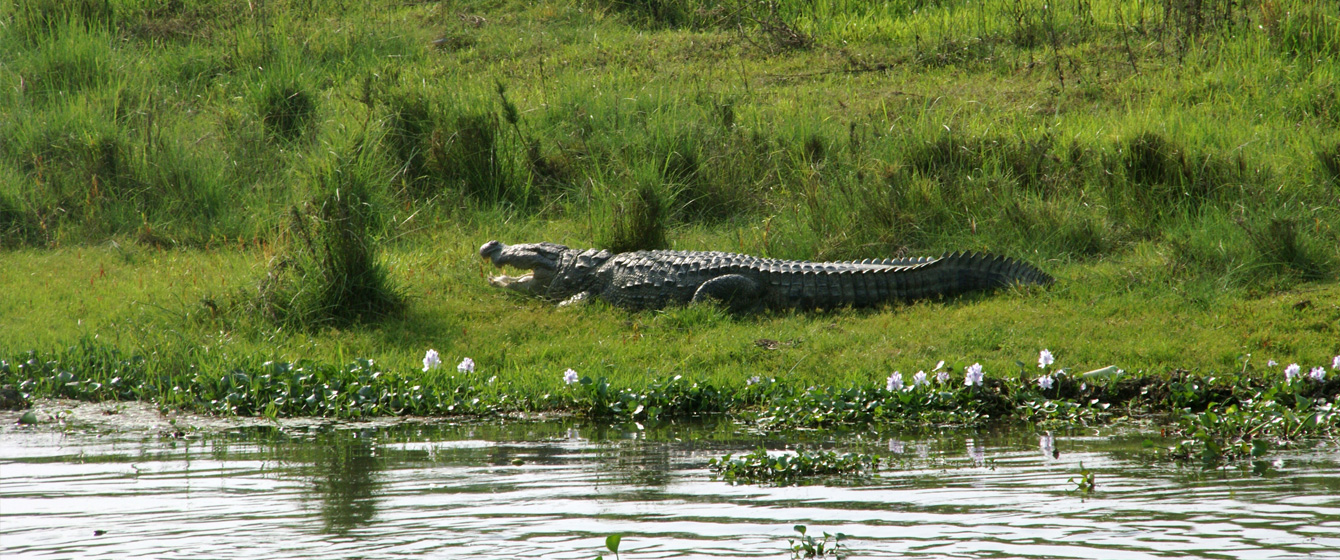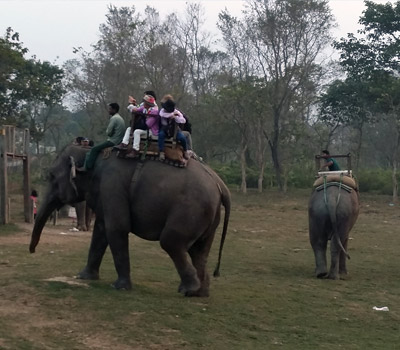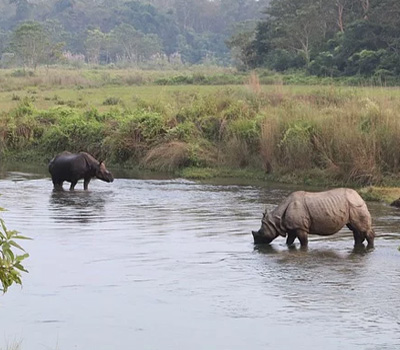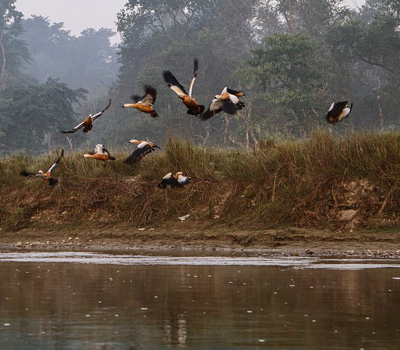Wildlife Safari While the high Himalayas makes up Nepal's northern region, the southern lowland known as the Terari is covered with dense tropical jungles teeming with diverse wildlife and exotic birds. Here you will find some of the most exciting safari destinations in the world. You will be going into deep jungle on elephant back or four wheel drive vehicle to view wild animals in their natural habitat. Other thrills are canoe rides on the jungle rivers, nature walks, bird watching excursions, and village tours
Nepal is a land of extreme contrasts in climate and geography, It has a unique topography ranging from lowlands with sub-tropical jungles to arctic conditions in the Himalayan highlands. Within a mere 150 kilometers the land rises from near sea level in the south to over 8000 meters in the North. This, together with the monsoon rainfall along the south facing slopes, has resulted in compacting virtually all climate zones found on planet Earth. As a result, Nepal has been endowed with a great diversity of life-zones providing a home for a large variety of plants, birds and animals.
The Terai lowlands are defined by a belt of well-watered floodplains stretching from the Indian border northward to the first slopes of the Bhabhar and the Siwalik Range. This is the richest habitat in the land with tall grasslands interspersed with riverine and hardwood sal forest . Here one can see wildlife such as the swamp deer, musk deer, black buck, blue bull, the royal Bengal tiger, gharial and marsh mugger crocodile and the last of a breed of Asiatic wild buffalo. This area is also rich in birdlife with a variety of babbles and orioles, koels and drongos, peacocks and floricans, and a multitude of wintering wildfowl. There are five protected areas in Nepal - Koshi Tappu and Parsa in the east, Sukla Phanta and Dhorpatan for hunting in the west and Shivapuri in the. mid-mountain region. The Churia, also known as the. siwalik, is the southern most range of the Himalaya. No where do they rise above 1,220 meters, This range is famous for fossil deposits of Pleistocene mammals, among them 10 species of elephants, 6 rhinoceros, hippopotamus, saber-toothed cats, various antelopes and primates such as the orang-utan, long extinct in the subcontinent, Situated north of the Churia are broad, low valleys of the inner Terai know as the Doons. These valleys are not unlike the outer plains with tall elephant grass, swamps and ox-bow lakes where the last of the one-horned rhinoceros survive. Royal Chitwan National Park in the Inner Terai of central Nepal is the first and best protected area in the kingdom. Once one of the most famous big game hunting areas in Asia. Chitwan now offers protection to a large array of mammals such as the. one-horned rhinoceros, tiger, leopard, sloth bear and the gaur (wild bison) as well as more than 400 species of birds.
Higher in the north between 2000 and 3500 meters lies the Mahabharat Range with its oak crowned crests. The hills of this midland are covered by a moist temperate forest of deodar, oak, maple and birch in which are found deer, ghoral serow, leopard and monkey, The gorgeous multi-colored lmpeyan pheasant (Nepal's national bird) is also found here with other endangered birds like the koklas and Cheer Pheasants. Protected areas in this zone include Khapted National Park in the Far-West, Dhorpatan Hunting reserve, North-west of Pokhara and Shivapuri Wildlife Sanctuary near Kathmandu

